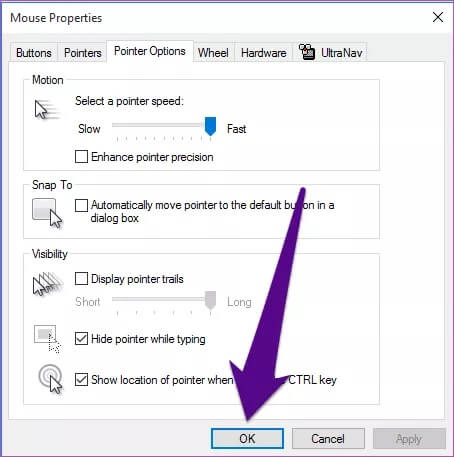
- #DISABLE MOUSE ACCELERATION HOW TO#
- #DISABLE MOUSE ACCELERATION FULL#
- #DISABLE MOUSE ACCELERATION SOFTWARE#
- #DISABLE MOUSE ACCELERATION PROFESSIONAL#
Don’t be alarmed if you don’t run the GNOME desktop specifically, this tool can be safely used for many GTK desktops, and desktops based on GNOME itself. We will be installing, and then using, the GNOME Tweaks package, otherwise known as GNOME Tweak Tool. The first step in our guide only really applies if you are using a GTK-based desktop, but if you’re unsure, it isn’t harmful to do this regardless. Some desktop environments refer to ‘disabling mouse acceleration’ as setting the mouse acceleration profile to “ flat”. Have included settings to disable mouse-acceleration in one way or another, (though, sometimes these distro-provided GUI methods of disabling/reducing mouse acceleration can tend to reset, sometimes- which is why this guide exists), the rest of this guide is steps of additional ways to ensure your mouse behaves as expected (non-accelerated). Many (but not all) desktop environments, especially as of recently, The first (and simplest) step that I recommend is to check your normal mouse-settings for an option to disable or reduce mouse acceleration, if you didn’t do this before reading my guide- take a good look, as you may have overlooked the option. I will be showing you the way that I recommend most, which should work fine for most users. There are many Linux desktop environments, window-managers, and the like- lots of compositors, lots of ways of handling user-input, such as there are many ways to perform the following process.
#DISABLE MOUSE ACCELERATION FULL#
I believe this blog post is one of the few to list the full comprehensive steps to be entirely acceleration-free, permanently.) Instructions Now you’re aware what mouse acceleration is, and why you want to disable it forever, let me fully explain how! (Note to experienced Linux users: You may see this post as being ‘over-the-top’ in the amount of steps in this guide, but I have had MANY experiences in which the simple GUI-only ways to do this have ‘reset’ and returned to the awful defaults, either with time, or when launching certain games/applications. This is critical if you wish to become better at using the mouse, using your mouse-driven software, gaming, and many more tasks, in an optimal and performant fashion.

In my opinion, mouse acceleration should be forcefully disabled, and never turned on again.
#DISABLE MOUSE ACCELERATION SOFTWARE#
But disabling mouse acceleration can also be an applicable benefit to power-users of software who the inaccuracy of the mouse can be a problem.
#DISABLE MOUSE ACCELERATION PROFESSIONAL#
Most, if not all, professional gamers disable mouse acceleration on an OS level, and inside of their games. But it is much harder to incorporate a consistent speed of movement, along with the movement distance itself, into muscle-memory. The mind, in most cases, can remember certain actions and movements you make with the mouse, if you make them consistently, if you learn and practice, most people refer to this as “muscle memory”. Mouse acceleration takes the speed of your movement into account, along with its distance, to calculate how the cursor (or camera/crosshair in a game) will move, which initially sounds like a good idea, but you then realize it makes it very difficult to become better at clicking specific locations, and moving the mouse reliably and consistently. Mouse acceleration is a behaviour that is supposed to make it easier for beginners to use the mouse, but at the severe cost of accuracy and muscle memory.


In my opinion, an accelerated mouse behaviour is very difficult to consistently use accurately. Mouse acceleration is a default part of many desktop environments, and I don’t believe it should be.

#DISABLE MOUSE ACCELERATION HOW TO#
How to fully properly disable Mouse Acceleration in most Linux distros & DE’s by Novimatrem min read | Released: 22/Aug/2020 at 01:10AM GMT+1 | Updated: 19/Apr/2021 at 08:18PM GMT+1


 0 kommentar(er)
0 kommentar(er)
